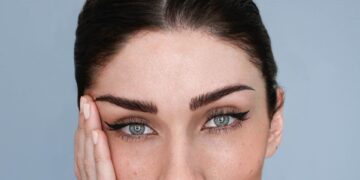Mineral vs. Chemical Sunscreens: Which is Right for You?
Choosing between mineral and chemical sunscreens can be simplified by understanding their fundamental differences. Each type offers unique benefits, and the best choice depends on your skin’s specific needs and your personal preferences.
Understanding How They Work
Mineral sunscreens, utilizing zinc oxide and titanium dioxide, create a physical barrier on the skin’s surface. This barrier reflects ultraviolet (UV) rays, preventing them from penetrating the skin. Chemical sunscreens, conversely, absorb UV radiation and convert it into heat, which is then released.
Sensitivity and Safety Considerations
Mineral sunscreens are often favored for sensitive and allergy-prone skin due to their gentle nature. Zinc oxide, a key ingredient in mineral sunscreens, is recognized by the FDA as safe and effective. While some ingredients in chemical sunscreens have raised concerns, experts generally consider them safe for typical use. The primary concern revolves around potential skin irritation caused by the chemicals absorbing into the skin to function.
Consumer Preferences and Practicality
Many consumers are increasingly drawn to mineral sunscreens, seeking “clean-label” products that align with their health and environmental values. However, mineral sunscreens can sometimes leave a white residue, especially on darker skin tones. Despite this, both mineral and chemical sunscreens effectively protect against sun damage when applied correctly.
Making an Informed Decision
Selecting the right sunscreen involves considering your skin type, lifestyle, and any specific health concerns. Whether you opt for mineral or chemical sunscreen, consistent and proper application is crucial for optimal sun protection.
SPF Demystified: Understanding the Numbers
The Sun Protection Factor (SPF) is a critical component in selecting the right sunscreen. Understanding what SPF values mean and how they translate to actual protection can help you make informed choices.
Decoding SPF Values
SPF measures a sunscreen’s ability to protect skin from UVB rays, the primary cause of sunburn. An SPF of 30 blocks approximately 97% of UVB rays, while an SPF of 50 blocks about 98%. While SPF 50 offers slightly more protection, the difference is marginal.
The Importance of Broad-Spectrum Protection
Choosing a sunscreen labeled “broad-spectrum” is essential. This designation indicates that the sunscreen protects against both UVA and UVB rays. UVA rays contribute to premature aging and long-term skin damage. Both mineral and chemical sunscreens can provide broad-spectrum protection.
Debunking Common Myths
A common misconception is that SPF acts as a multiplier for sun exposure time. In reality, factors such as the time of day, location, and individual skin type significantly influence sunburn risk. No sunscreen offers 100% protection, and regular reapplication is vital.
Choosing the Right SPF
Experts generally recommend an SPF of at least 30 for most people, particularly during outdoor activities. Those with sensitive skin may find mineral sunscreens more suitable. The following table highlights several popular sunscreens, including their SPF, type, and best use cases:
| Sunscreen | SPF | Type | Best For | UVA/UVB Protection | Reef Safe? | Product Net Weight (OZ) | MSRP | Price Per OZ |
|---|---|---|---|---|---|---|---|---|
| Banana Boat Light As Air Sunscreen Lotion | 50 | Chemical | Face & Body | Broad-spectrum | No | 12.0 | $20 | $1.67 |
| Supergoop Play Everyday SPF50 | 50 | Chemical | Face & Body | Broad-spectrum | No | 18.0 | $68 | $3.78 |
| Equate Ultra Sunscreen Lotion | 50 | Chemical | Body | Broad-spectrum | No | 16.0 | $8 | $0.52 |
| Black Girl Sunscreen Moisturizing Lotion | 30 | Chemical | Body | Broad-spectrum | No | 4.0 | $14 | $3.50 |
| Thrive Bodyshield Sunscreen | 50 | Mineral | Face & Body | Broad-spectrum | Yes | 5.8 | $30 | $5.16 |
The Importance of Reapplication
Regardless of the SPF, sunscreen should be reapplied every two hours, especially after swimming or sweating. Consistent and correct application is more critical than choosing the highest SPF available.
The Significance of Broad-Spectrum Protection
Understanding the importance of broad-spectrum protection is crucial for effectively defending your skin against sun damage. Both UVA and UVB rays pose risks, and choosing the right sunscreen can make a significant difference in maintaining healthy skin.
Understanding Broad-Spectrum
Broad-spectrum sunscreens protect against both UVA and UVB rays. Health authorities emphasize this protection because both types of rays contribute to skin damage and increase the risk of skin cancer. Ensuring your sunscreen is labeled broad-spectrum is the first step in comprehensive sun defense.
Standards for Daily Defense
Sunscreens seeking recommendation seals often require a minimum SPF of 30, along with verified broad-spectrum coverage. These standards include a critical wavelength value of 373 nanometers to ensure substantial UVA protection. This addresses previous concerns about inadequate defense against longer-wavelength rays.
Sunscreen for Dark Skin Tones: Avoiding the White Cast
Finding the right sunscreen can be a game-changer for individuals with dark skin, providing essential protection without unwanted side effects like a white cast.
The White Cast Challenge
Mineral sunscreens, while known for their gentle formulas, have historically left a noticeable white cast on darker skin tones. This is due to the active ingredients, such as zinc oxide and titanium dioxide. However, advancements in sunscreen technology have addressed this issue, leading to more inclusive options.
Tinted Mineral Sunscreens: A Solution
Tinted mineral sunscreens are now widely available and specifically designed for deeper complexions. These sunscreens blend seamlessly into the skin, eliminating the white cast problem. They often contain iron oxides, which contribute to the tint and provide additional sun protection.
Key Ingredients to Look For
When selecting a sunscreen, look for products with zinc oxide or titanium dioxide as the active ingredients. Hydrating components like squalane and ceramides are also beneficial, helping to keep the skin moisturized and healthy. Sunscreens with tone-adapting, buildable color coverage are also a great option.
Expert Recommendations and Product Variety
Experts recommend using a sunscreen with an SPF of 30 or higher for optimal daily protection. The table below lists sunscreens recommended for dark skin tones:
| Brand/Product Name | SPF | Type | Tinted | Designed/Tested for Deep Skin | White Cast | Key Ingredients | Recommended For |
|---|---|---|---|---|---|---|---|
| Colorescience Sunforgettable Face Shield Flex | 50 | Mineral | Yes | Yes | No | Zinc Oxide, Iron Oxide | Sensitive skin |
| EltaMD UV Clear Deep Tinted Broad-Spectrum | 46 | Mineral | Yes | Yes | No | Zinc Oxide, Niacinamide | Oily/combination/sensitive |
| Mama Sol’s Top Picks (unspecified brand examples) | 30+ | Mineral | Yes | Yes | No | Zinc Oxide, Squalane, Ceramides | Everyday wear |
Sunscreen Reapplication: Maintaining Optimal Protection
Reapplying sunscreen is essential for maintaining continuous protection throughout the day.
The Two-Hour Rule
Experts recommend reapplying sunscreen every two hours when outdoors. If swimming or sweating, more frequent reapplication is necessary.
Application Technique
For adequate coverage, use approximately one ounce of sunscreen each time you apply it. Apply sunscreen at least 15 minutes before sun exposure, especially when using chemical UV filters, to allow proper binding to the skin.
Overlooked Areas
Commonly missed spots include the ears, nose, lips (use an SPF lip balm), back of the neck, hands, feet, and hairline. Pay extra attention to these areas during reapplication.
Quality Over Quantity
Dermatologists emphasize that using enough sunscreen and reapplying it regularly is more important than choosing a very high SPF. Consistent and thorough application provides the best defense against the sun’s harmful rays.
Q&A
Question 1: What are the key differences between mineral and chemical sunscreens in terms of how they work and their potential impact on sensitive skin?
Answer: Mineral sunscreens (containing zinc oxide and titanium dioxide) create a physical barrier reflecting UV rays. Chemical sunscreens absorb UV rays and convert them to heat. Mineral sunscreens are often preferred for sensitive skin due to lower irritation potential, with zinc oxide recognized as safe and effective by the FDA. While some chemical sunscreen ingredients have raised concerns, experts generally deem typical use safe.
Question 2: How significant is the difference in protection between an SPF 30 and an SPF 50 sunscreen, and what is the importance of “broad-spectrum” protection?
Answer: SPF measures UVB protection. SPF 30 blocks about 97% of UVB rays, while SPF 50 blocks approximately 98%. The difference is minimal. Crucially, “broad-spectrum” protection is vital, indicating protection against both UVB (sunburn) and UVA (aging and skin damage) rays. Both mineral and chemical sunscreens can offer broad-spectrum protection.
Question 3: What are the key considerations when choosing a sunscreen for dark skin tones, and what advancements have addressed the “white cast” issue?
Answer: For dark skin, choosing a sunscreen that avoids a white cast is important. Historically, mineral sunscreens caused this, but tinted mineral sunscreens now offer effective protection without the white residue. These often include iron oxides for color and added sun protection. Look for zinc oxide or titanium dioxide as active ingredients, along with hydrating components like squalane and ceramides.
Question 4: How often should sunscreen be reapplied, and what are some commonly missed areas during application?
Answer: Reapply sunscreen every two hours, or more frequently after swimming or sweating. Aim for about one ounce of sunscreen per application, applied 15 minutes before sun exposure. Commonly missed areas include ears, nose, lips (use SPF lip balm), back of the neck, hands, feet, and hairline. Consistent reapplication is more important than extremely high SPF.
Question 5: What are the minimum SPF and broad-spectrum requirements for sunscreens seeking a Seal of Recommendation in the USA (as of 2025 guidelines)?
Answer: Sunscreens seeking the Skin Cancer Foundation’s Seal of Recommendation (SCF) must have a minimum SPF of 30 and provide broad-spectrum (UVA/UVB) protection. They also need a critical wavelength (CWL) minimum of 373 nanometers to ensure adequate UVA protection and a standard application density of 2 mg/cm². Higher SPF products can compensate for potential under-application.







